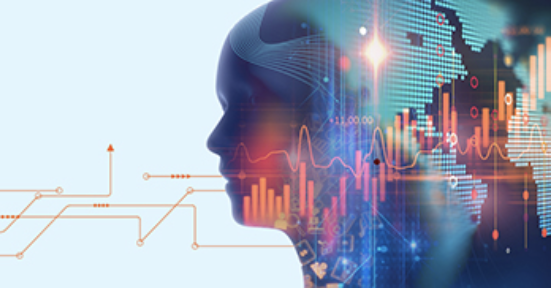Home » Bereskin & Parr: Looking Back at AI In 2021
Bereskin & Parr: Looking Back at AI In 2021

Bereskin & Parr LLP is a leading Canadian full-service intellectual property law firm that provides various IP services including patents, trademarks, copyright, licensing, regulatory and website-related matters for clients across all industries around the world, ranging from small start-up operations and individual inventors to large Canadian and multinational corporations. Bereskin & Parr’s professionals have a wide variety of backgrounds in IP as well as various technical backgrounds in engineering, chemistry, biotechnology, electronics, and computer-related fields for providing patent-related services. For example, the firm’s Electrical & Computer Technology, Artificial Intelligence, Medical Devices, CleanTech, Cannabis and Quantum Technologies practice groups help companies protect, license and enforce their intellectual property.
Despite the pandemic’s impact on businesses (and our everyday lives) in 2021, it failed to put a damper on innovation and progress and a two-part article by Bereskin & Parr’s Reshika Dhir and Andrea Ngo is taking a look back at AI in 2021, highlighting some of the year’s most important developments at the intersection of Artificial Intelligence (AI) and Intellectual Property (IP). Read on for Part One.
2021 Year in Review: Artificial Intelligence – Part 1
By Reshika Dhir and Andrea Ngo
In this two-part series, we highlight some of the year’s most important developments at the intersection of Artificial Intelligence (AI) and Intellectual Property (IP).
In this article, we look at the recent developments on the topic of AI and inventorship across the globe. In the second part of this series, we will look at latest developments in patentability of AI-based inventions in Canada.
AI and Inventorship
2021 was a very interesting year for the topic of AI and inventorship. Though the United States (the U.S.) and the United Kingdom (the UK) continued to hold that an AI cannot be named as an inventor for a patent, South Africa became the first jurisdiction to grant a patent to an AI inventor while Australia became the first to judicially recognize a non-human inventor.
As a reminder, Dr. Stephen Thaler’s creation DABUS (Device Autonomously Bootstrapping Uniform Sensibility) was named as an inventor on two patent applications (the DABUS applications) that were simultaneously filed in many jurisdictions, including the UK, Germany, Israel, China, Korea, Taiwan, South Africa, Australia, Canada, the U.S., and Europe (at the European Patent Office (the EPO)). DABUS itself is a patented AI system based on two artificial neural networks, where one artificial neural network generates ideas and another “critic” artificial neural network identifies, from the generated ideas, those that are sufficiently novel, as compared to the machine’s pre-existing knowledge base.
United States
On September 2, 2021, U.S. District Court Judge Leonie Brinkema of the Eastern District of Virginia granted the United States Patent and Trademark Office’s (USPTO’s) motion for summary judgement and held that an AI system cannot be named an inventor of a patent. [1] The USPTO had published a decision in April of 2020, finding that only natural persons may be named as inventors in a patent application, relying on various sections of the Patent Act (35 U.S. Code), Federal Circuit case law and the Manual of Patent Examining Procedure (MPEP).
Drawing from the U.S. Supreme Court’s interpretation of the word “individual” in a case involving the Torture Victim Protection Act, Judge Brinkema found that the same definition could be applied to patent law, and therefore the word “individual” in the Patent Act referred to the ordinary meaning of the word individual, that is, a natural person.
In arriving at her decision, Judge Brinkema also referred to the oath or declaration accompanying a patent application, which must include a statement that “such individual believes himself or herself to be the original inventor or an original joint inventor of a claimed invention in the application.” (35 U.S.C §115(b)(2))(emphasis added by Judge Brinkema). The use of personal pronouns and the verb “believes” was, according to Judge Brinkema, a clear signal that Congress intended for an inventor to be a natural person.
Referencing Federal Circuit holdings, Judge Brinkema also found that patent law requires that inventors be natural persons because the very essence of inventorship is “conception,” a mental act that can only be achieved by a natural person. Finally, judge Brinkema found that while Dr. Thaler’s policy arguments could have some merit, it was up to Congress to decide if the Patent Act should be amended.
United Kingdom
On September 21, 2021, the Court of Appeal affirmed the September 2020 High Court decision (of High Court of England and Wales), which supported the UK Intellectual Property Office’s (UKIPO’s) position that an inventor must be a natural person and therefore DABUS cannot be an inventor. [2]
The majority found that on a systematic interpretation of the Patents Act 1977, only a person can be an inventor. Speaking for the majority, Arnold LJ referred to various sections of the Patents Act, notably, s.13, which confers a “right” upon “the inventor or joint inventors” to be mentioned in a granted patent or published application. He concluded that because only persons can have rights, it follows that inventors must be persons.
Lord Justice Colin Birss however dissented. While he agreed that under the Patents Act, an inventor must be a natural person, Birss LJ noted that the case was instead about “the correct way to process patent applications through the Patent Office” and that because Dr. Thaler had followed the procedures and processes correctly under s.13(2) of the Patent Act, the application should have been allowed to proceed to examination. S.13(2) requires that an applicant identifies the person(s) whom he believes to be the inventor(s) (s. 13(2)(a)) and indicates the derivation of the right to be granted (s. 13(2)(b)). According to Birss LJ, by not identifying any person as an inventor because Dr. Thaler believes that there is no human inventor, Dr. Thaler had complied with his obligations and provided the information required with honesty.
South Africa
On July 28, 2021, in a world first, the South African Companies and Intellectual Property Commission (CIPC) granted a patent to the application listing the AI, DABUS, as the inventor. Of note, however, is that the patent was granted without undergoing substantive examination, as South Africa is a non-examining country. Objections based on novelty and inventiveness can now be received but it is unclear whether the issue of inventorship can be challenged.
Australia
While South Africa may have been the first jurisdiction to grant a patent to an AI inventor, in a landmark decision, Australia became the first jurisdiction to judicially recognize that an inventor can be non-human.
On July 30, 2021, Justice Beach of the Federal Court of Australia set aside the Deputy Commissioner’s determination that Dr. Thaler’s patent application did not comply with the Patent Regulations 1991 (Cth), instead accepting that an AI can be recognized as an inventor under the Australian Patent Act. [3] In reaching his decision, Justice Beach noted that nothing in the Act dictates the contrary conclusion and that unlike for example, copyright law, no specific aspect of patent law involves the requirement for a human author or the existence of moral right. Justice Beach then stated that as indicated by the suffix “or” in inventor, an inventor is an agent noun, and it is well known that an agent can be a person or a thing. Examples of other agent nouns provided in the decision included “computer”, “controller”, “regulator”, “lawnmower”, “dishwasher” etc. Justice Beach then stated that to hold that an AI can be an inventor would simply be a reflection of current reality. Just as the conception of “manner of manufacture” has developed over time, so too should the concept of “inventor”, especially given the synergy and symmetry between the two concepts.
Finally, Justice Beach found that the decision would be consistent with the stated object of the Patent Act, which is to promote technological innovation and the transfer and dissemination of technology. The Federal Court remitted the examination of the patent application to the Deputy Commissioner.
Germany
Germany has apparently found a solution to this conundrum. In a recent decision, the German Federal Patent Court held that while the listed inventor must be a natural person, the AI can be additionally designated as being involved in the invention.[4]
EPO
On December 21, 2021, the Legal Board of Appeal dismissed the appeal, confirming the EPO’s decision to refuse the Dabus applications.[5] The Board of Appeal also refused the auxiliary request according to which no person had been identified as inventor, but a natural person was indicated to have the right to a European patent by virtue of being the owner and creator of the AI. The full written decision is yet to be published at the time of writing this article.
Canada
In November 2021, the Canadian Intellectual Property Office (CIPO) issued a courtesy office letter to Dr. Thaler’s patent agents stating that the application does not appear to be compliant with the Patent Act and Patent Rules because the inventor is a machine, and, according to CIPO, it does not appear possible for a machine to have rights or to transfer those rights to a human under Canadian law. CIPO had given three months for Dr. Thaler’s agents to respond and attempt to comply with the requirements of Canadian Patent Law. On January 13, 2022, Dr. Thaler’s agents requested an extension of time until August 31, 2022, to respond to CIPO’s letter. Whether or not this extension will be granted remains to be seen.
What’s next?
The situation continues to evolve and generate widespread interest. It seems likely that Dr. Thaler will attempt to appeal the UK Court of Appeal’s decision to the Supreme Court. In Australia, the Commissioner of Patents announced shortly after the decision was rendered that an appeal would be filed. The appeal is likely to be heard by a Full Bench of the Federal Court sometime in early 2022. Decisions from other jurisdictions on the corresponding DABUS applications, including Canada, are still pending. We will continue to watch and report on the development of the DABUS saga.
Click Here to read Part Two of 2021 Year In Review: Artificial Intelligence
[1] Thaler v Hirshfeld, 1:20-cv-903(LMB/TCB) (ED Va 2021)
[2] Thaler v Comptroller General of Patents Trade Marks and Designs, [2021] EWCA Civ 1374.
[3] Thaler v Commissioner of Patents, [2021] FCA 879.
[4]https://www.juve-patent.com/news-and-stories/cases/german-federal-patent-court-points-to-solution-for-dabus-inventions/
[5]https://www.epo.org/law-practice/case-law-appeals/communications/2021/20211221.html
Spark Centre
https://sparkcentre.org
Helping innovative companies start, grow and succeed. Spark Commercialization and Innovation Centre is one of eighteen not-for-profit Regional Innovation Centres (RICs) that form part of the Ontario Network of Entrepreneurs (ONE). The centre works to improve competitiveness and visibility of Durham Region and Northumberland County as a world-class innovation cluster. Spark Centre works with clients to develop individualized plans for success. We connect start-ups to business and research networks, learning tools, business coaching, mentorship, and access to funding and investment.



